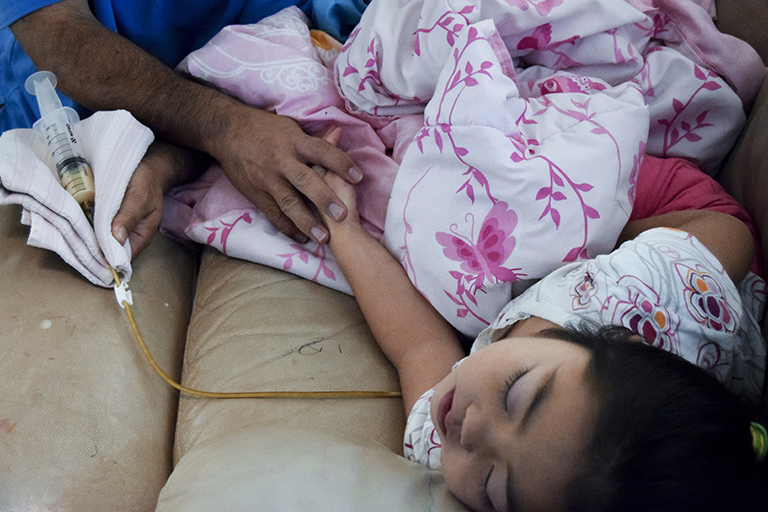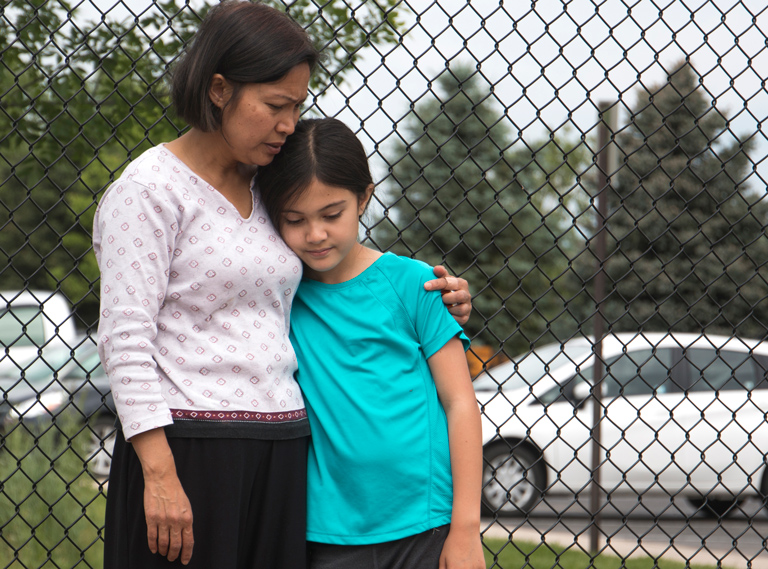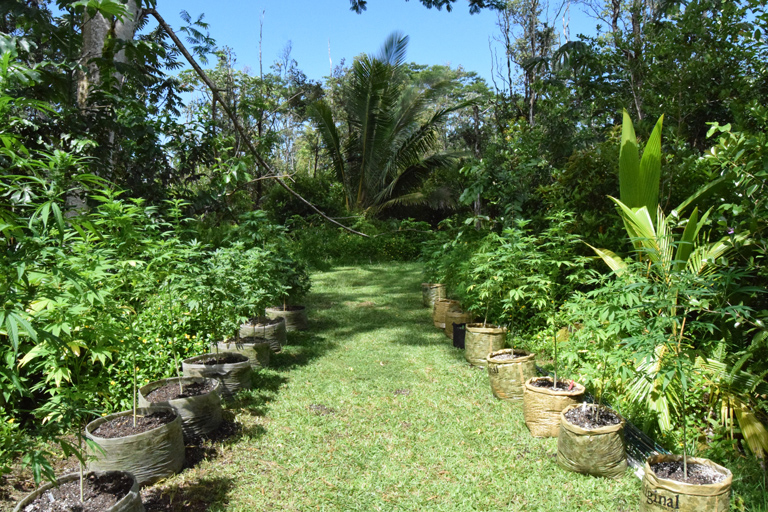Just down the road opposite Ruggles’ dirt driveway, Brad Snow’s grow of 42 plants stand under the awnings of handmade wooden bungalows.
His backyard runs deep into the surrounding jungle, where in some places sharp, black mounds of volcanic rock jut up from the ground. The soil, though fertile, is uneven and only a few inches deep in most spots on his property.
Snow also is a patient and caregiver; he said his large grow also is for the five other medical marijuana card holders who live with him. Though he doesn’t count himself among them, Snow said illegal growers persist in Hawaii because they fulfill a need.
“The only reason there’s a black market is because (marijuana) is illegal and people want it,” Snow said. “The black market is the last example of the free market in America.”
Medical marijuana program director Ruis concedes that oversight has not increased in the 15 years since the program began. She also told News21 she is not sure how many participants actually are registered with the program.
The most recent estimate — 13,000 — is last year's number from DPS’ records. They have no numbers so far for 2015. Her department also does not regulate the strength of patients’ medicine or their dosages.
Compliance checks of medical growers also are inconsistent. Neither the Narcotics Enforcement Division in the state Department of Public Safety nor Hawai police could say who is fully responsible right now for checking on potentially illegal grows, especially since the new law delegated most authority to the health department.
In Hawaii, compliance checks most often were conducted by law enforcement helicopter crews searching for unusually large grows.
About 200 miles from where Ruggles and Snow have made their homes on the Big Island, on the island of Oahu, in a carved out section of the Oahu Forest National Wildlife Refuge, is the small suburban town of Mililani, home to the Sugano-Kaneshiro family.
Jari Sugano holds her daughter Maile Jen in her arms as Sugano’s husband – Reid Kaneshiro – administers oil made from cannabis through a surgically placed feeding tube in his daughter’s stomach.
Sugano’s 6-year-old daughter Maile Jen Kaneshiro has Dravet syndrome, a rare form of epilepsy, which over the years has diminished her ability to be independent and communicate.
Before turning to medical marijuana, Sugano said she exhausted all options to treat her daughter. Sugano found a strain of marijuana through her own experimentation that she believes reduces her daughter’s seizures. As a licensed caregiver with two degrees in agriculture, she cultivates and concentrates the cannabidiol (CBD) oil.

Reid Kaneshiro administers cannabis oil to his daughter, Maile Jen. (Photo by Anne M. Shearer | News21)
But experimenting with different varieties is a challenge under Hawaii’s seven-plant rule. Sugano cannot try a new strain without worrying that it will diminish her supply.
“It’s been a long road,” Sugano said. “We started from, basically, a period of chaos, and we’re finally getting to a point where we’re starting to enjoy life again and get back to a daily routine that’s bearable.”
The oil she gives Maile Jen is a 1-to-1 ratio of CBD to Tetrahydrocannabinol (THC). This ratio is much higher than in most oils used to treat epilepsy in other states, which can be as low in THC-content as 30-to-1.
“The low-THC products don’t always work for her,” she said.
Sugano said she does worry about potential legal consequences.
“I’m worried about Child Protective Services one day coming to my door and just questioning what I do,” she said. “There’s benefits to it, but there’s also risks.”
Right now, neither Hawaii’s medical marijuana law nor administrative rules require the health department to monitor the types of medicine patients make with the marijuana they grow.









